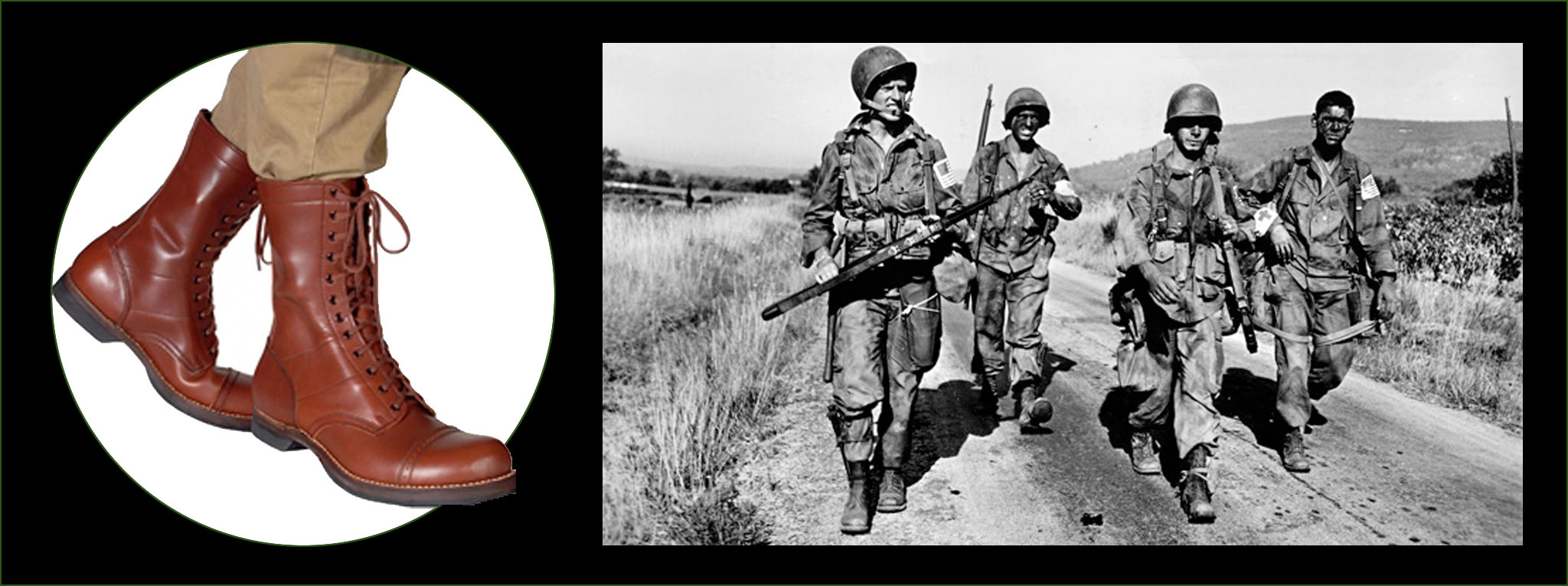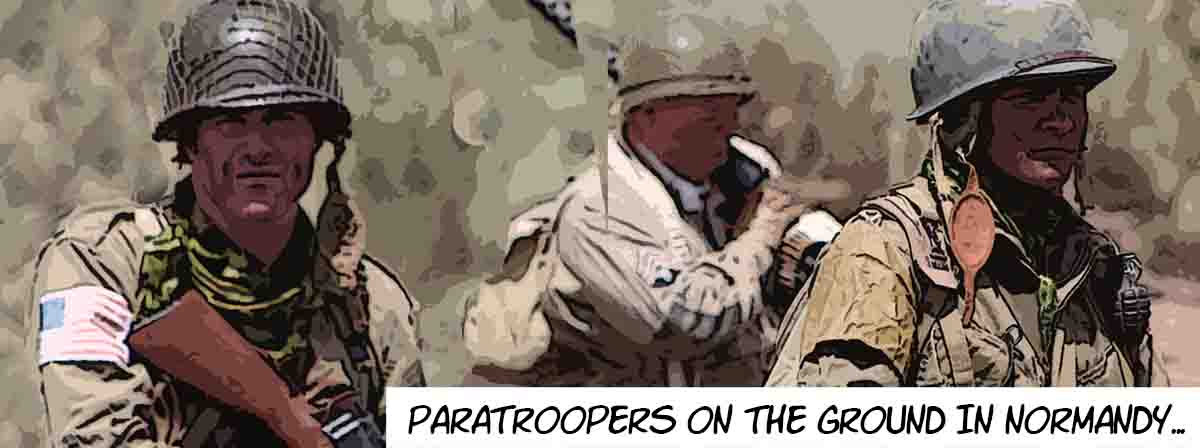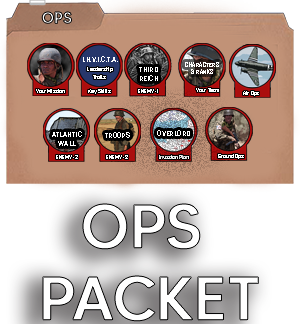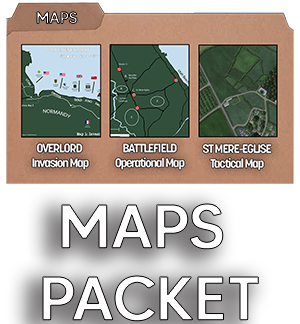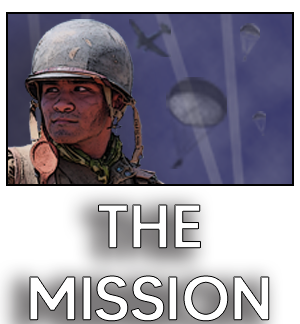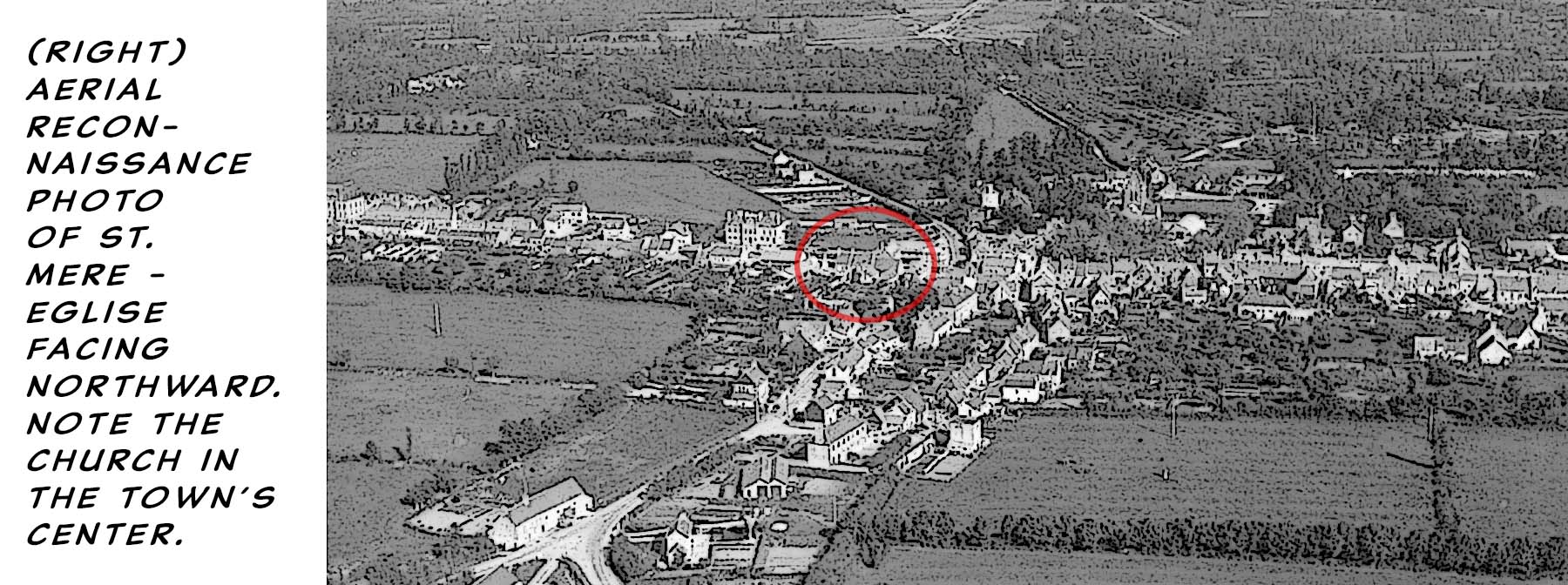
3rd Battalion must seize and defend St. Mere-Eglise itself on D-Day.
ON THE GROUND
After jumping, get to your battalion rally point as quickly as possible.
Avoid enemy contact until you have linked up with your larger unit.
Maintain awareness so that you know what direction to move in when you land.
If possible, stay stationary after landing, and let the rest of your stick “roll up” to you.
The Challenge & Pass is “Flash & Thunder”. (The Germans have a hard time pronouncing “Thunder”.)
RULES OF ENGAGEMENT
1. Do not fire unless you are certain of your target. There will be many French civilians in our operational area.
2. Be careful about firing your weapon at night. Your muzzle flash can give your location away to the enemy.
THE 82ND AIRBORNE DIVISION
You are part of the 82nd Airborne, one of the American Army’s most elite units. Created in the First World War, the 82nd fought in every battle leading to the defeat of Imperial Germany.
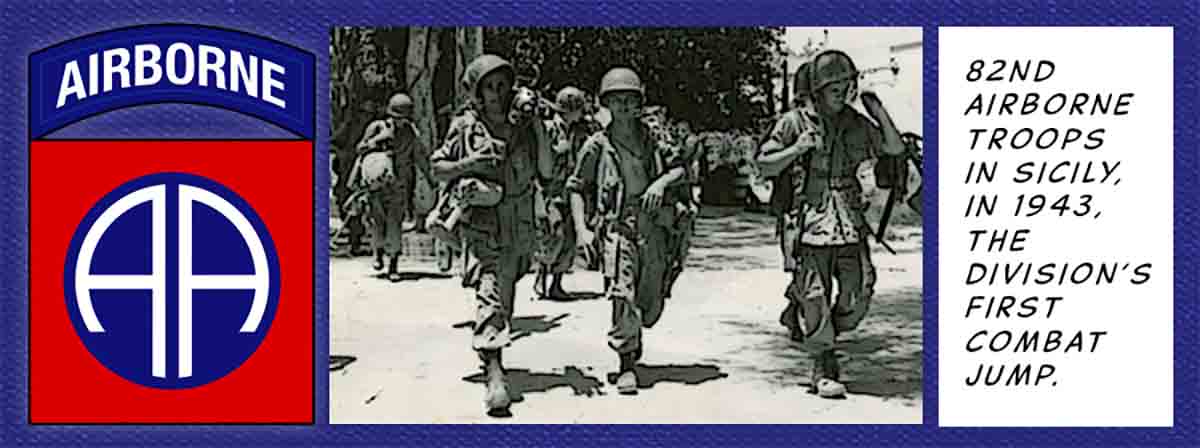
The Army reactivated the 82nd Division in 1942 and gave it a new airborne mission. With five parachute regiments of 6000 men each, the 82nd led Operation: Husky, the invasion of Sicily in 1943, the first Allied leap into Europe.
In the invasion of Italy, the 82nd blocked Nazi reinforcements to the beaches.
In November 1943, the Division went to England to train for Operation: Overlord.
An experienced force, the 82nd Airborne readied itself for a crucial role in the most important operation of the War.
PARATROOPER GEAR & EQUIPMENT
Paratroopers wear unique uniforms that distinguish them from ordinary soldiers. Cotton, pale green & baggy, with reinforced elbows and knees, these uniforms have easy to open, slanted pockets.r.
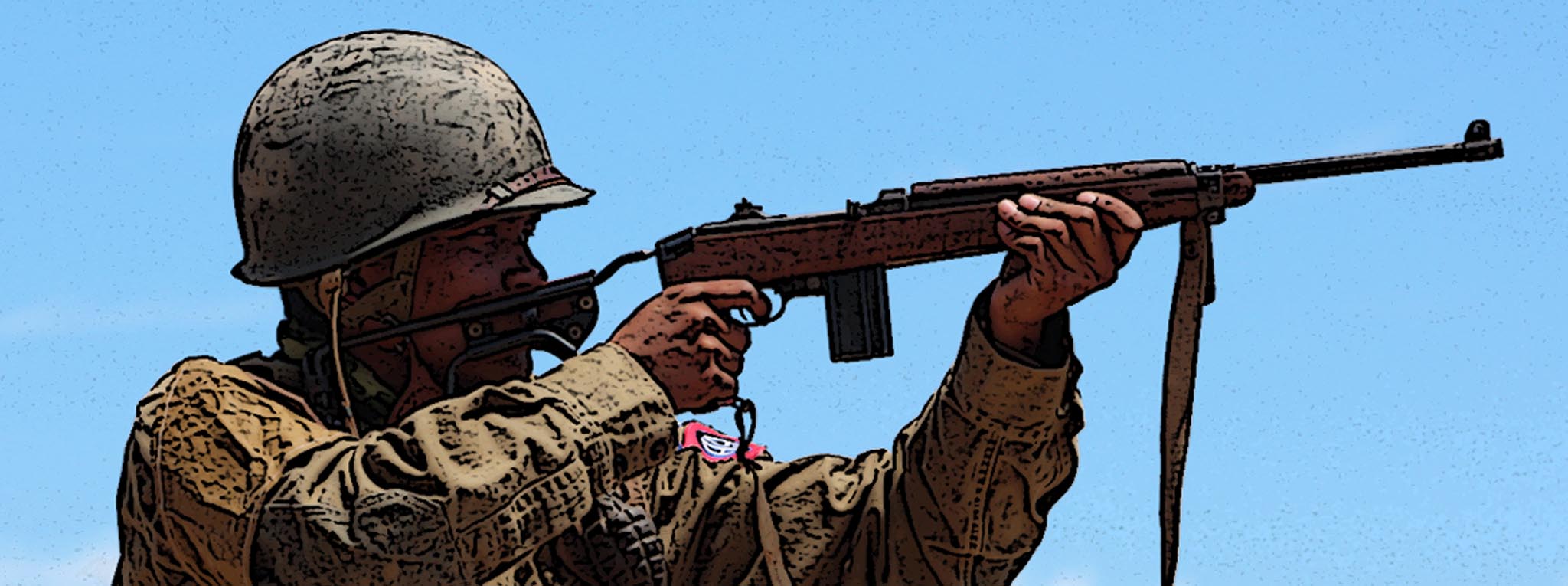
You can identify a paratrooper by his tall, lace up jump boots with ankle and leg support to prevent broken bones when landing. Only paratroopers are allowed to wear these boots, the mark of an elite soldier.
